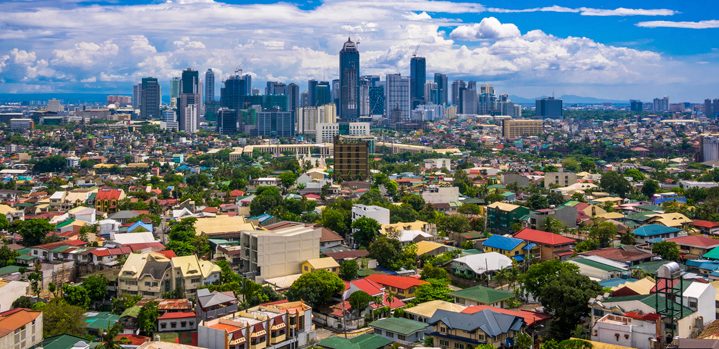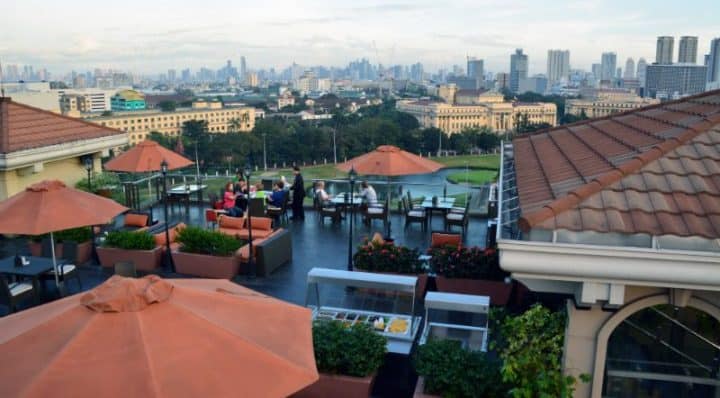
Gay Manila City Guide
First visit to Manila? Then our gay Manila city guide page is for you.

Manila
Manila (Maynila) is the capital city of the Philippines. With an area of just about 35 km², it is one of the most densely populated cities in the world. The city of Manila is one of 16 cities that make up the National Capital Region called 'Metro Manila'.
Quezon City is to the northeast of Manila; Mandaluyong to the east; Makati to the southeast, and Pasay to the south. There are about 16 million people in Metro Manila.
Major Cities
- Manila - the busy capital, home of gay scene in Malate area, Chinatown and Little India.
- Quezon City - popular area, known for its shopping malls and electronic stores.
- Mandaluyong - shopping mecca of the Philippines with numerous huge malls.
- Pasay - the city's cultural center and home of The Mall of Asia (the Philippines' largest mall) and the famous Coconut Palace.
- Pasig - an industrial town with thriving businesses.
- Makati - central business district of Metro Manila that has many skyscrapers, 5-star hotels, restaurants, shopping malls and entertainment venues.
Gay Scene
Manila's gay nightlife started in the Malate area, around the junction of Maria Orosa Street and Julio Nakpil Street. Nowadays, only a few Gay Bars remain and the gay scene has spread out to other parts of Manila.
BED nightclub, Manila's premier gay dance club, closed down in 2015. O Bar moved to Ortigas Center in Quezon City. A few Gay Saunas and Massage Spas can also be found in Quezon City and Pasay.
Whilst the number of gay venues in Manila is small, the scene itself is quite lively with lots of character, especially during Pride or a big party weekend.
Launched in 2015, JUNGLE Circuit Party is one of the biggest LGBT parties in The Philippines and one of the fastest-growing in Asia. The organisers host annual gay dance parties in various cities across the country.
Getting to Manila
The Ninoy Aquino International Airport (NAIA, MNL) is Manila's main airport, connecting flights from overseas. Most international airlines use Terminal 1, while Terminals 2 and 4 are for domestic flights. Terminal 3, the biggest of all four terminals, is for both domestic and international flights, making it the busiest.
To get from the airport to your hotel, there are a few options. You can take a ride-hailing service such as Grab or JoyRide, the local versions of Uber. There are also metered taxis at different bays and you can negotiate a price with the driver or simply use the meter. There is also a shuttle bus going on a loop around all terminals for Php50. The same bus company has shuttles that go from NAIA to different cities within the metro (Pasay, Mandaluyong, Quezon City) and the surrounding provinces (Laguna).
If you have connecting flights from Manila, allow at least 3-4 hours for transit (and if possible, choose flights that leave from the same Terminal), as domestic flights are often delayed and traffic between Terminals can be congested.
Getting around Manila
Jeepneys offer rides around the city. You can jump on and off almost anywhere, and they are great for short trips. These were originally leftover U.S. Army trucks but have become one of the icons of Manila's transport system.
Metered taxis are always available, but expect heavy traffic in business areas. Note that some drivers may take advantage of tourists by trying to charge a flat rate.
Ride-hailing apps such as Grab, JoyRide, Angkas and MoveIt have great coverage across the metro and allows you to choose from four to six-seater vehicles or motorcycles.
Buses operate on main routes throughout the city, although they can get into traffic and are not the most convenient option.
Trains are one of the fastest options but can get packed especially during rush hour.
- The LRT (Light Rail Transit) has two lines: Line 1 (Yellow Line) runs from Baclaran Station in Paranaque to Roosevelt Station in Quezon City; Line 2 (Purple Line) runs from Antipolo City in Rizal, just outside Manila, to Recto in downtown Manila.
- The MRT (Metro Rail Transit) runs from the North Avenue Station in Quezon City to Taft Avenue Station in Pasay City. Fares are cheap and the trains are air-conditioned.
Where to Stay in Manila
Many gay travelers stay not within Manila (city), but other parts of Metro Manila, like Quezon City for an easy commute to other parts of the capital, or Pasay with its bayside location and proximity to different malls and entertainment venues.
Others opt for larger, more upscale hotels in the financial district of Makati and Taguig. Hotels in this area are close to many shopping malls, restaurants and entertainment venues. This is a car-centric city, so your only option of getting around, if you're not familiar with bus routes or the MRT, is to get a taxi or Grab.
For our list of some the best hotels in Manila, visit the Gay Manila Hotels page.
Things to See & Do
Manila Bay - a natural harbor with stunning sunset views.
Rizal Park (aka 'Luneta') - the largest urban park in Asia, with world-class sculptures, beautiful gardens, art exhibits, event venues and entertainment outlets.
Intramuros - located in northern end of the Bay, the area features remains of the old walled Spanish settlement of Manila.
Fort Santiago - built as a stone fortress in the 17th century; now a museum and public park.
San Augustin Church - one of the oldest stone churches in the Philippines, having survived two fires and seven earthquakes.
National Museum of the Philippines - contains historic works of national heritage including the paintings of artist Felix Resurreccion Hidalgo.
Chinatown - one of the largest Chinatowns in the world, with lots of good Chinese food and products.
Bahay Tsinoy - a one-of-a-kind museum showcasing how the Chinese migrated to the Philippines and assimilated as Filipinos.
Mabuhay Restop - an entertainment venue & café near Rizal Park offering unique shows, great tours and delicious food.
University of Santo Tomas - the oldest existing university in the entire Far East and second to be founded in the Philippines.
Coconut Palace - a residence built along the waterfront by First Lady Imelda Marcos for Pope John Paul II's visit in 1981.
Malate Church - a sacred church where the Filipinos have prayed for over four centuries.
When to Visit
The best time of year to visit Manila is from late December to April as the weather is not too hot and there's hardly any rain.
Drinking Water
Water supply in metro Manila is considered drinkable but travelers are recommended to stick to bottled water.
Electricity
220 volt 60 Hz throughout most of the country, using either American or European-style plugs.
Join the Travel Gay Newsletter
Have we got something wrong?
Are we missing a new venue or has a business closed? Or has something changed and we have not yet updated our pages? Please use this form to let us know. We really appreciate your feedback.
